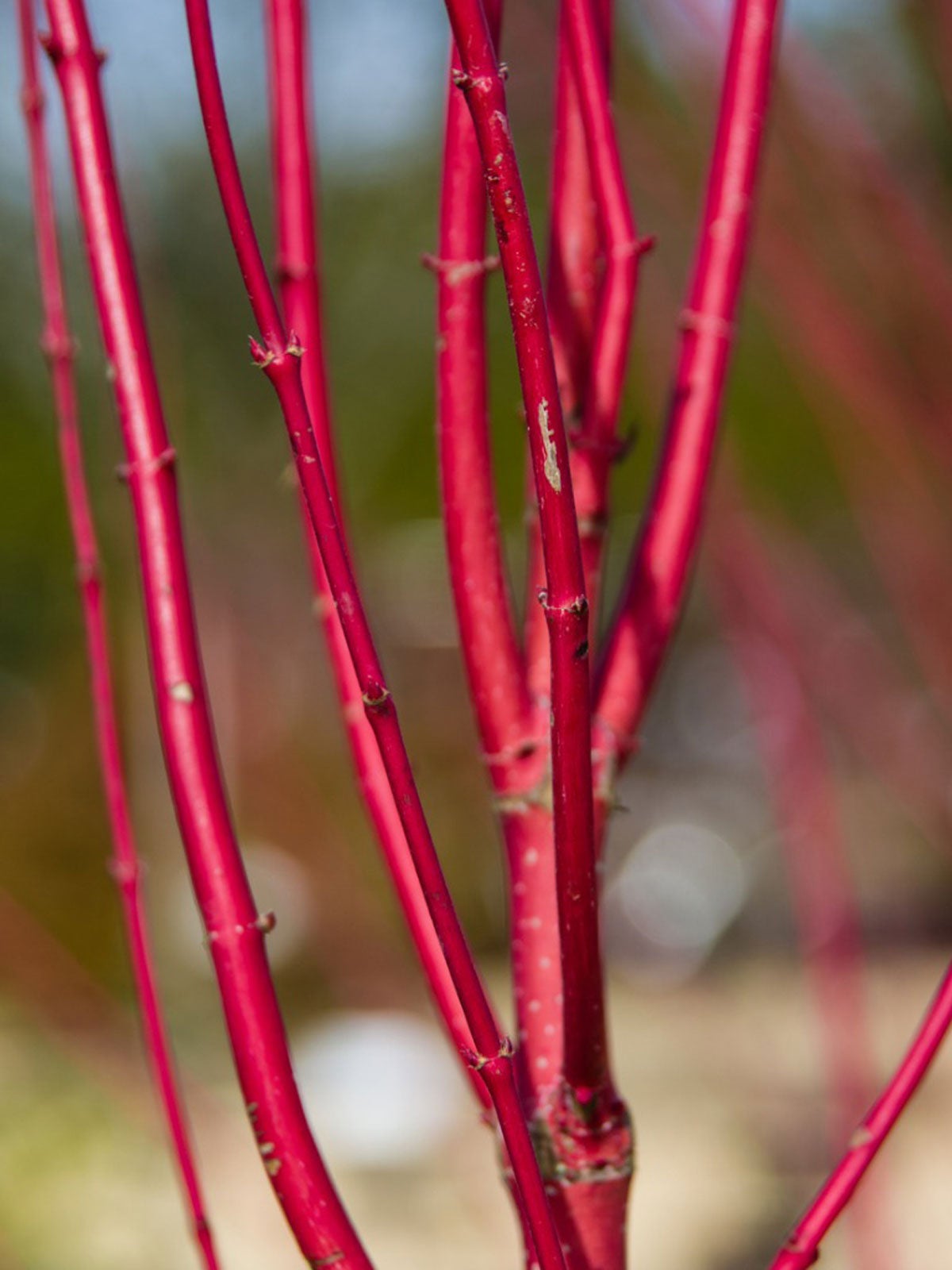Red Twig Dogwood Care: Tips For Growing A Red Twig Dogwood


Growing a red twig dogwood is a great way to add spectacular color to the winter garden. The stems, which are green in spring and summer, turn bright red when the foliage drops off in autumn. The shrub produces creamy white flowers in spring and berries that ripen from green to white by the end of summer. Both fruits and flowers look good against the dark background of the foliage, but pale in comparison to the brilliant winter display.
Growing a Red Twig Dogwood
Don't confuse red twig dogwood trees with other dogwood trees. While both the tree and the shrub belong to the Cornus genus, red twig dogwoods never grow to become trees. There are two species of Cornus called red twig dogwoods: Tatarian dogwood (C. alba) and Redosier dogwood (C. sericea). The two species are very similar. Red twig dogwood is one of those plants where more is better. They look fantastic when planted in groups or as an informal hedge. When planting red twig dogwoods, give them plenty of room. They grow up to 8 feet (2 m.) tall with an 8 foot (2 m.) spread. Overcrowding encourages diseases and causes less attractive, thin stems.
Red Twig Dogwood Care
Red twig dogwood care is minimal except for pruning. Annual pruning is essential to keep the brilliant colors of the twigs. The primary goal of pruning red twig dogwoods is to remove the old stems that no longer show good winter color. Remove about a third of the stems at ground level every year. Cut out old, weak stems as well as those that are damaged, discolored, or growing poorly. This method of pruning keeps the color bright and the shrub vigorous. After thinning you can shorten the stems to control the height if you'd like. Cut back the entire shrub to 9 inches (23 cm.) above the ground if it becomes overgrown or out of control. This is a good way to quickly renew the plant, but it leaves a bare spot in the landscape until it regrows. Water weekly in the absence of rain for the first couple of months after planting red twig dogwoods and cut back on the water once the shrub is established. Mature shrubs only need watering during dry spells. Feed the plant once a year with a layer of compost or a sprinkling of slow-release fertilizer over the root zone.
Gardening tips, videos, info and more delivered right to your inbox!
Sign up for the Gardening Know How newsletter today and receive a free copy of our e-book "How to Grow Delicious Tomatoes".

Jackie Carroll has written over 500 articles for Gardening Know How on a wide range of topics.
-
 Looking For Plants To Give You The Soft And Fuzzies? Try These 5 Fuzzy Leaf Plant Options
Looking For Plants To Give You The Soft And Fuzzies? Try These 5 Fuzzy Leaf Plant OptionsLovers of texture, drama, silver foliage and tactile plants will adore these special sensory garden additions. These fuzzy leaf plant options will leave you all aglow
By Susan Albert
-
 Get Ready For A Summer Of Hummers! Grow These Full Sun Hummingbird Plants and Flowers
Get Ready For A Summer Of Hummers! Grow These Full Sun Hummingbird Plants and FlowersIf you’re lucky enough to enjoy a sunny backyard, make sure you are maxing out on your pollinator opportunities and grow these full sun hummingbird plants and flowers
By Tonya Barnett